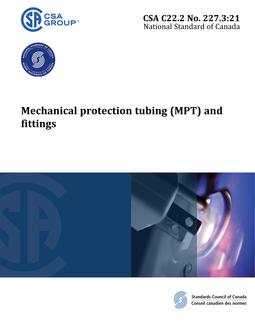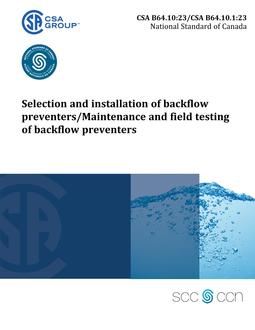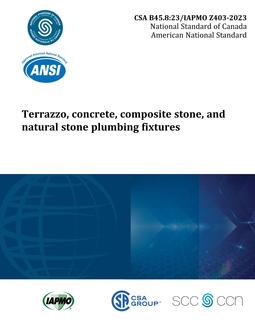
Click here to purchase
Preface
This is the third edition of CSA Z341 Series, Storage of hydrocarbons in underground formations, which consists of CSA Z341.1, Reservoir storage, and CSA Z341.2, Salt cavern storage. It supersedes the previous editions, published in 2006 and 2002. It also replaces CSA Z341, published as a single Standard in 1998 and 1993.
Z341.1-10 Reservoir storage
Scope
1.1
This Standard sets out minimum requirements for the design, construction, operation, maintenance, abandonment, and safety of hydrocarbon storage in underground reservoir formations and associated equipment. The equipment considered includes
(a) storage wellhead and Christmas tree assemblies;
(b) wells and subsurface equipment; and
(c) safety equipment, including monitoring, control, and emergency shutdown systems.Hydrocarbons covered by this Standard are restricted to natural gas.
1.2
The scope of this Standard is shown in Figure 1.
1.3
This Standard does not apply to
(a) underground storage facilities for gases or fluids other than hydrocarbons, such as storage facilities used for air storage, unless these fluids are used specifically for the displacement of stored hydrocarbons;
(b) underground storage facilities used for storing substances other than hydrocarbons, such as reaction chambers and waste disposal facilities;
(c) underground storage in overburden materials involving the use of tanks, such as gasoline tanks;
(d) design and fabrication of pressure vessels that are covered by pressure vessel codes;
(e) heat exchangers, pumps, compressors, and piping in processing plant facilities, manufacturing plants, or industrial plants that are covered by appropriate codes;
(f) gathering lines, flow lines, metering, compressors, and associated surface equipment beyond the first emergency shutdown valve (ESV) or block valve; and
(g) storage of hydrocarbons containing hydrogen sulphide in concentrations greater than 10 mol/kmol.
1.4
It is not the intent of this Standard to prevent the development of new equipment or practices, nor to prescribe how such innovations should be handled.
1.5
Where the requirements of this Standard differ from the requirements of other standards or codes referenced herein, the requirements of this Standard take precedence.
1.6
The requirements of this Standard do not apply retroactively to existing installations and installations under construction at the time of publication, but they do apply to the extension, replacement, maintenance, and upgrading of such installations.
1.7
In CSA Standards, “shall” is used to express a requirement, i.e., a provision that the user is obliged to satisfy in order to comply with the standard; “should” is used to express a recommendation or that which is advised but not required; “may” is used to express an option or that which is permissible within the limits of the standard; and “can” is used to express possibility or capability. Notes accompanying clauses do not include requirements or alternative requirements; the purpose of a note accompanying a clause is to separate from the text explanatory or informative material. Notes to tables and figures are considered part of the table or figure and may be written as requirements. Annexes are designated normative (mandatory) or informative (non-mandatory) to define their application.
—————————————————————-
Z341.2-10 Salt cavern storage
Scope
1.1
This Standard sets out minimum requirements for the design, construction, operation, maintenance, abandonment, and safety of hydrocarbon storage in underground salt caverns and associated equipment.
The equipment considered includes
(a) storage wellhead and Christmas tree assemblies;
(b) wells and subsurface equipment; and
(c) safety equipment, including monitoring, control, and emergency shutdown systems.Hydrocarbons within the scope of this Standard include crude oil, diesel, natural gas, methane, ethane, propane, butane, and other hydrocarbons by themselves or in mixtures.
1.2
The scope of this Standard is shown in Figure 1.
1.3
This Standard does not apply to
(a) underground storage facilities for gases or fluids other than hydrocarbons, such as storage facilities used for air storage, unless these fluids are used specifically for the displacement of stored hydrocarbons;
(b) underground storage facilities used for storing substances other than hydrocarbons, such as reaction chambers and waste disposal facilities;
(c) underground storage in overburden materials involving the use of tanks, such as gasoline tanks;
(d) design and fabrication of pressure vessels that are covered by pressure vessel codes;
(e) heat exchangers, pumps, compressors, and piping in processing plant facilities, manufacturing plants, or industrial plants that are covered by appropriate codes;
(f) gathering lines, flow lines, metering, compressors, and associated surface equipment beyond the first emergency shutdown valve (ESV) or block valve; and
(g) storage of hydrocarbons containing hydrogen sulphide in concentrations greater than 10 mol/kmol.
1.4
It is not the intent of this Standard to prevent the development of new equipment or practices, nor to prescribe how such innovations should be handled.
1.5
Where the requirements of this Standard differ from the requirements of other standards or codes referenced herein, the requirements of this Standard take precedence.
1.6
The requirements of this Standard do not apply retroactively to existing installations and installations under construction at the time of publication, but they do apply to the extension, replacement, maintenance, and upgrading of such installations.
1.7
In CSA Standards, “shall” is used to express a requirement, i.e., a provision that the user is obliged to satisfy in order to comply with the standard; “should” is used to express a recommendation or that which is advised but not required; “may” is used to express an option or that which is permissible within the limits of the standard; and “can” is used to express possibility or capability. Notes accompanying clauses do not include requirements or alternative requirements; the purpose of a note accompanying a clause is to separate from the text explanatory or informative material. Notes to tables and figures are considered part of the table or figure and may be written as requirements. Annexes are designated normative (mandatory) or informative (non-mandatory) to define their application.
Product Details
- Published:
- 02/01/2010
- ISBN(s):
- 9781554913527
- Number of Pages:
- 132
- File Size:
- 1 file , 2.3 MB
- Product Code(s):
- 2420454, 2020805


